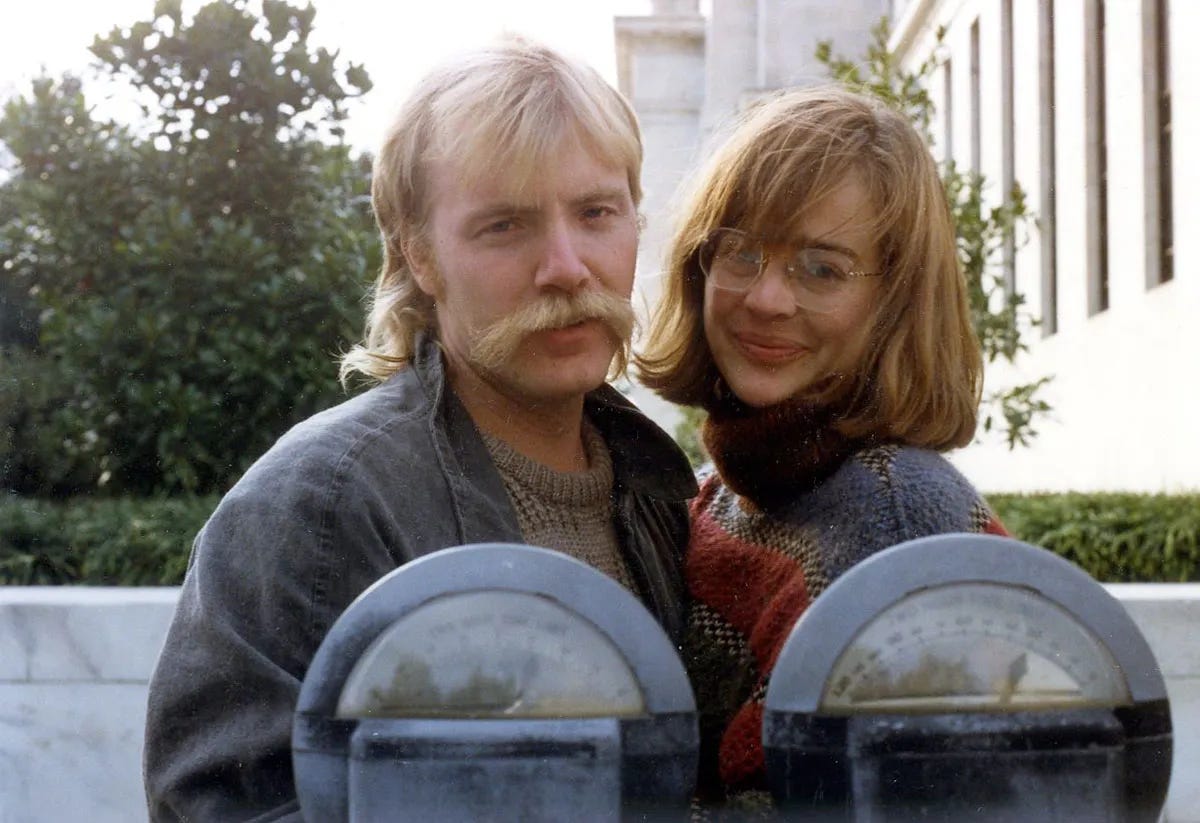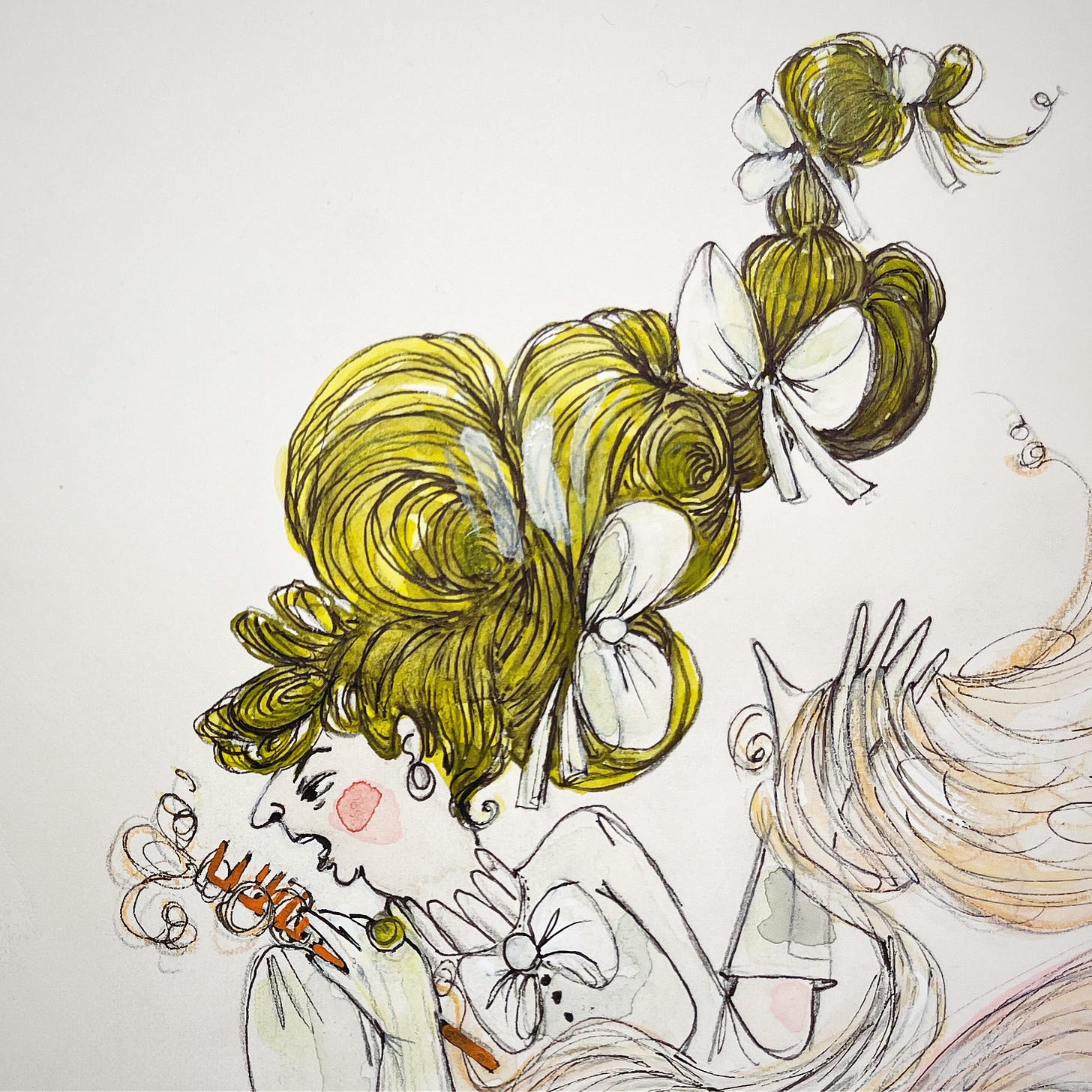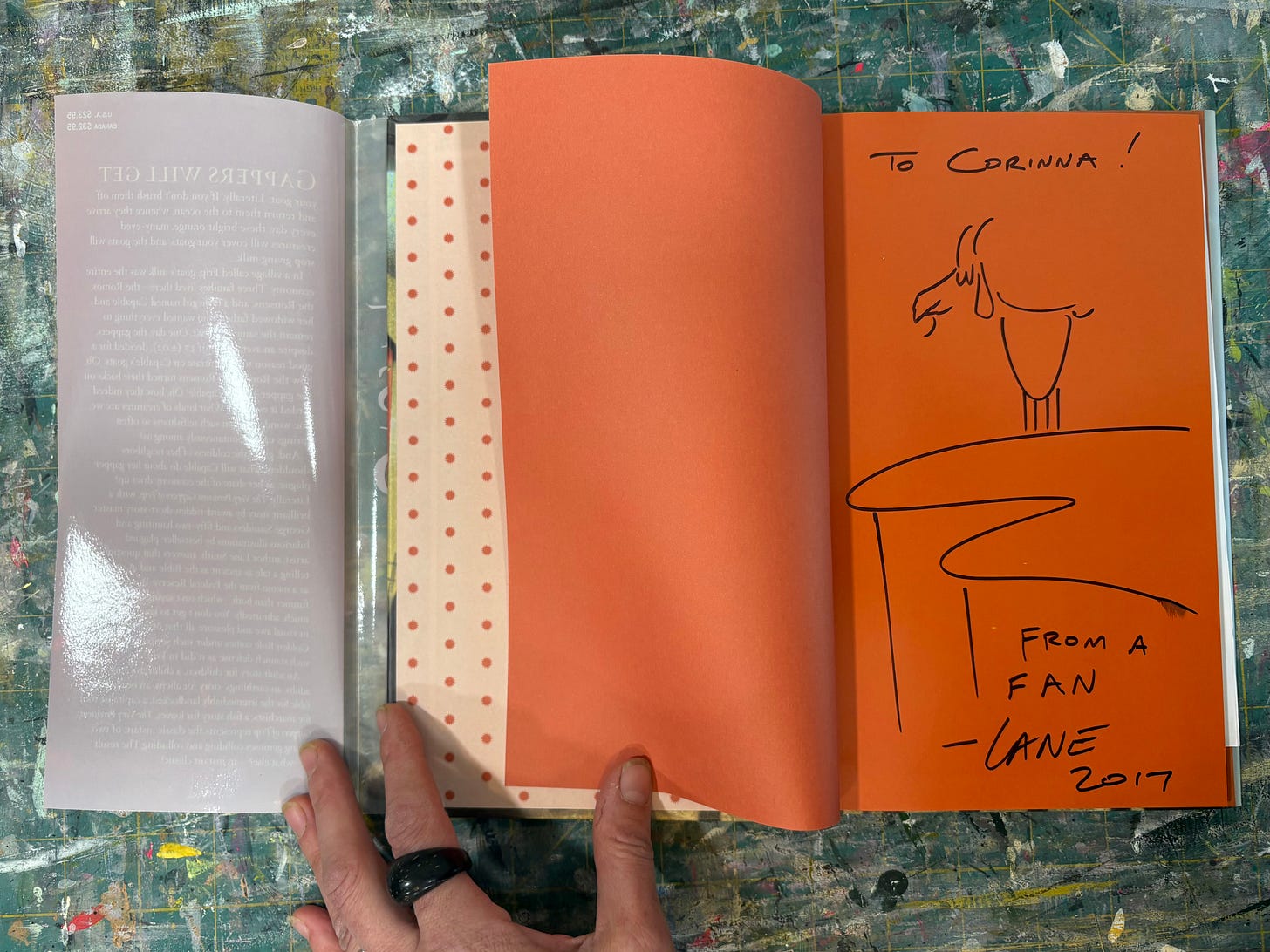Making THE ARGUERS (a ten year journey)
on tricky endings, hope, arguments without end, and gappers
I have a new picture book that came out this week.
The Arguers is a modern parable/fairy tale about conflict and disagreement, excess and entanglement. But the story of making The Arguers— that is actually a story about endings.
The first draft was called A Great Talent, and is from 2015—the year I signed with my agent and found a home for my first picture book (The Book of Mistakes).
However, The Arguers is different from my other books in that the ending to the story wasn’t completely sorted when my editor acquired the project. Or rather, it had an ending that I liked. But it was a cautionary ending. And it was, perhaps, a little depressing for a picture book. And so my editor, art director, and agent (all smart people) were wondering if I might find another (more hopeful) way to end the story.
Eventually, I realized they might be right.
Over the next ten years, I wrote and/or illustrated nine more books. After each project I would revisit The Arguers. But each time the ending fell flat. I couldn’t find my way toward anything that felt both satisfying and honest. Let alone hopeful.
Fortunately, the ending to The Book of Mistakes also gave me a lot of trouble. So I was in familiar territory. I knew how essential discomfort is to creative work. (You can read more about the process of finding an ending for The Book of Mistakes here.)1
And so, I muddled along.
Which means—I made a lot of book dummies.
There are twenty six versions with different endings that I’ve printed out, even more if you count the digital drafts. One version has a lost stuffed animal, another a snow globe. There is a field of flowers, and an ice cream truck. There are long scarves and flowers and birds. To put it in perspective, for The Book of Mistakes I made fourteen dummies. And I thought that was a lot.
Then, a couple years ago, in the midst of this creative uncertainty, and eight years after writing the first draft of The Arguers, I had a this conversation with George Saunders over on his Substack.
It started with a question about The Very Persistent Gappers of Frip, his 2000 picture book collaboration with illustrator Lane Smith and designer Molly Leach2.
Gappers is the book that made me realize, with certainty, that I wanted to make picture books. It is beautiful and strange. It is a fable, or a fairy tale, of sorts. It is often ridiculous, and yet it always feels true.


As an aside— I recently learned that Capable’s father in Gappers is a caricature of George Saunders.

I can totally see this.

In fact, now that I know, I can’t believe I didn’t notice this on my own (thank you Lane, for the inside scoop.)

So… Gappers was my introduction to George, Lane, and Molly— three of my favorite book makers.3 And George was my introduction to Substack. Specifically, his Story Club— which showcases Saunders-as-teacher at his finest, delving deeply into storytelling and the creative process.4
To this day, Story Club is my favorite thing on Substack. Even when I’m busy and in deadline mode (like now—final art for my next picture book is due in two weeks) I make time to read the Q&A’s where he responds to reader questions about the creative process. For writers and creatives who don’t know about it—it’s a gem.
And so, as I continued to struggle with my own story, I reached out to George via Story Club. I was curious about the making of The Gappers of Frip, about the ending in particular, about hope and darkness and writing for young people:
After George answered my questions he asked me a few in return. At the time (as you can see in my responses) I was in the final stages of figuring out an ending for Arguers.
The day after our conversation, when I sat down to write I was still stuck. But I felt a little less alone. I’d been reminded that the questions I was asking (about hope, discomfort, and tidy endings) were worthwhile. I was reminded that other writers have been down this path before, and that asking hard or uncomfortable questions can be a way forward.
And so I went back to work.


Eventually, I found my way toward an ending. It’s not entirely hopeful. But also, it’s not without hope.
To me this feels honest. And this feeling of honesty, in turn, fills me with… hope.
Since working on The Arguers, I’ve realized how much I like making books about uncomfortable subjects: mistakes, loneliness, cruelty, heartache, misunderstanding, arguing. I also like making books about beautiful things. But what I love most is making books5 that allow the beautiful and the uncomfortable to live together on the page—like they do in life.
This, to me, is the beauty of The Gappers of Frip. It’s what gave me shivers the first time I read it… to see something true and dark and uncomfortable expressed in a beautiful way. With humor, which is a form of grace.
And now, ten years since I wrote that first draft about an argument over brushes and combs, and twenty five years since I discovered The Gappers of Frip6 and started to dream of making picture books, The Arguers is out in the world!
It’s a full circle moment.
The best kind.
What about you— do you have a favorite picture book that doesn’t have a hopeful ending? I’m thinking of Dr. Seuss’ Butter Battle Book. Anything else? (I’d argue that Jon Klassen’s first two hat books are hopeful— in that they are stories of justice, of hope fulfilled.)
What books have inspired you the most on your writing or illustration journey?
Comment below and I’ll pick two readers at random to send a signed copy of The Arguers, along with one of the handmade bookmarks pictured above.
Also—
If you enjoy process pictures you can also follow me over on Instagram. But if you want to know when a book is coming out and other studio updates, this Substack is the best place.
Thanks for reading!
For many years The Seven Impossible Things Before Breakfast blog run by Julie Danielson was the treasure trove for illustrators and writers— a photo heavy mix of process pictures and conversations with creators of of picture books. While the blog is no longer active, it is archived and I highly recommend it to anyone wanting to learn more about illustration and picture books.
To learn more about Molly, read Design Matters or this interview on The Horn Book Inc. website. Or watch this video about Molly on YouTube.
I talk about the experience of reading Gappers for the first time on the Seven Impossible Things Before Breakfast blog from 2017 where I discuss making The Book of Mistakes.
Maria Popova, creator of The Marginalian (one of my very favorite newsletters) has written about this here.
at Grassroots Bookstore in Corvallis, OR.















really enjoyed reading about how long it took for The Arguers to come together for you. i can be impatient, as you know, but i’m also learning the difference between writing a book and writing a book that works the way it’s meant to. most of my favorite books have hopeful endings though they aren’t always perfect, because hope doesn’t really come from or to perfect places. it comes through the crevices, the after-hours, in the in-between — like The Arguers. like all the books that help us feel okay again.
Thank you for sharing this, I genuinely enjoyed every part of it. I now need to get my hands on the Arguers (and also start working on my own children’s book - if only I could nail the start (and not the finish) 🤔!!).